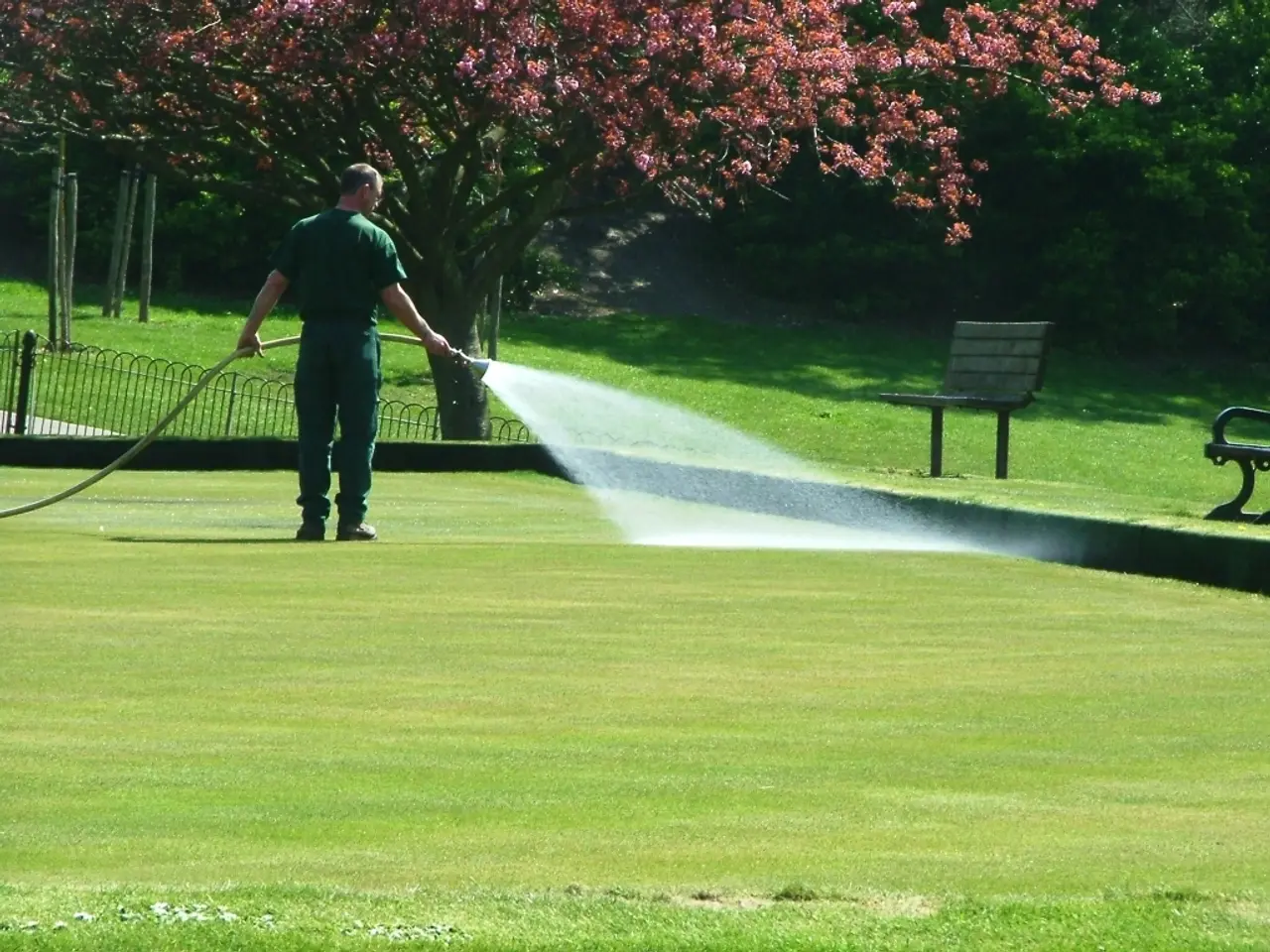Employ Drip Irrigation for Raised Garden Beds to Cultivate More with Reduced Water Consumption
================================================================================
When the growing season comes to an end, it's essential to winterize your raised bed drip irrigation system to protect it from freeze damage. Here's a step-by-step guide to help you through the process.
Draining the System Completely
The first step is to drain the irrigation lines completely. If your system has low points, drain water there. On a flat site, lift sections of the irrigation lines to push out water until no more discharges from the line ends. This minimizes the risk of frozen water expanding and damaging the tubing.
Removing and Storing Sensitive Components
Detach any ball valves, filters, and timers connected to the drip line. Shake out remaining water from these removable parts and store them indoors for winter, as freezing water can damage their moving parts.
Optional Storage of Irrigation Lines
Although not always mandatory, rolling up flexible drip lines and storing them can prolong their lifespan by reducing exposure to extreme cold over time.
Additional Steps for Pressurized Systems
For pressurized drip systems with pumps, regulators, or vacuum breakers, additional steps like blowing compressed air through the system and insulating above-ground components might be necessary. Professional service may be helpful here.
Turning off the Water Supply and Insulating Above-Ground Plumbing
Turn off the water supply to the irrigation system and release pipe pressure by opening valve zones if applicable. Remove caps or risers at high and low points to facilitate drainage. Insulate above-ground plumbing and disconnect hoses to prevent freeze damage on fittings and hose bibs.
Winterizing Modular Raised Beds
Modular raised beds from Vego can be built to fit any space for those needing a raised bed to get started. To winterize these beds, follow the same steps as for traditional raised beds.
Retrofitting Raised Beds for Drip Irrigation
Raised beds can be retrofitted to use drip irrigation by using elbows, various lengths of pipe, and placing the drip lines at ground level between the beds.
Benefits of Drip Irrigation
A drip irrigation system is beneficial for watering raised beds, as it delivers water to the plant's roots while keeping it off the leaves. This focused application of water minimizes water loss to evaporation.
Components of a Drip Irrigation System
A drip irrigation system consists of five components: a water filter, a pressure reducer, a pressure gauge, a header pipe, and drip lines.
Preparing the System for Spring Use
In the spring, flush the winterized system to prepare it for use. This step ensures that any residual dirt or debris is removed, and the system is ready for another growing season.
By following these steps, you can protect your system from freeze damage, preserving irrigation components for the next growing season.
Incorporating drip irrigation into your modular raised beds, such as those from Vego, can benefit your home-and-garden lifestyle by allowing for efficient watering of your plants, as it delivers water directly to the roots. When winter arrives, be sure to follow the process of winterizing your drip irrigation system, which includes draining it completely, removing and storing sensitive components, and turning off the water supply to the irrigation system.




